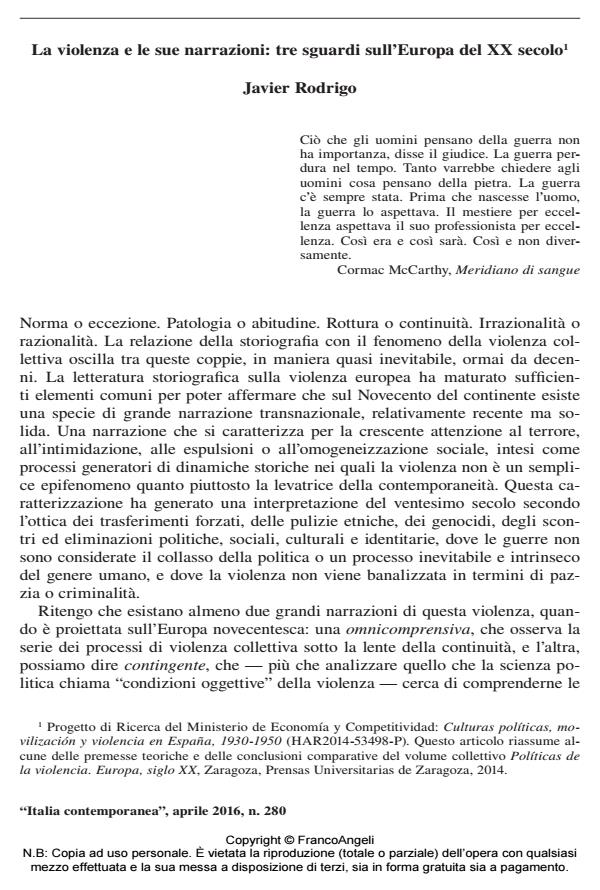Violence and its narratives. Three interpretations of twentieth century European history
Journal title ITALIA CONTEMPORANEA
Author/s Javier Rodrigo
Publishing Year 2016 Issue 2016/280
Language Italian Pages 13 P. 127-139 File size 107 KB
DOI 10.3280/IC2016-280007
DOI is like a bar code for intellectual property: to have more infomation
click here
Below, you can see the article first page
If you want to buy this article in PDF format, you can do it, following the instructions to buy download credits

FrancoAngeli is member of Publishers International Linking Association, Inc (PILA), a not-for-profit association which run the CrossRef service enabling links to and from online scholarly content.
This article examines the grand narratives and interpretations that have been offered of 20th century European history, as a century of violence, terror, and genocide. By examining some examples coming from the historiographical debate, as well as several concrete historical processes (such as the debate on genocide, the concentration camp system, civil wars and the Holocaust), the article highlights the main features of these narratives and some of their limits and conceptual limits. Finally, it advances a proposal to analyze some continuities and discontinuities in the history of European collective violence, in terms of historical contingencies.
Keywords: Europe, genocide, violence, terror, historiography
Javier Rodrigo, La violenza e le sue narrazioni: tre sguardi sull'Europa del XX secolo in "ITALIA CONTEMPORANEA" 280/2016, pp 127-139, DOI: 10.3280/IC2016-280007